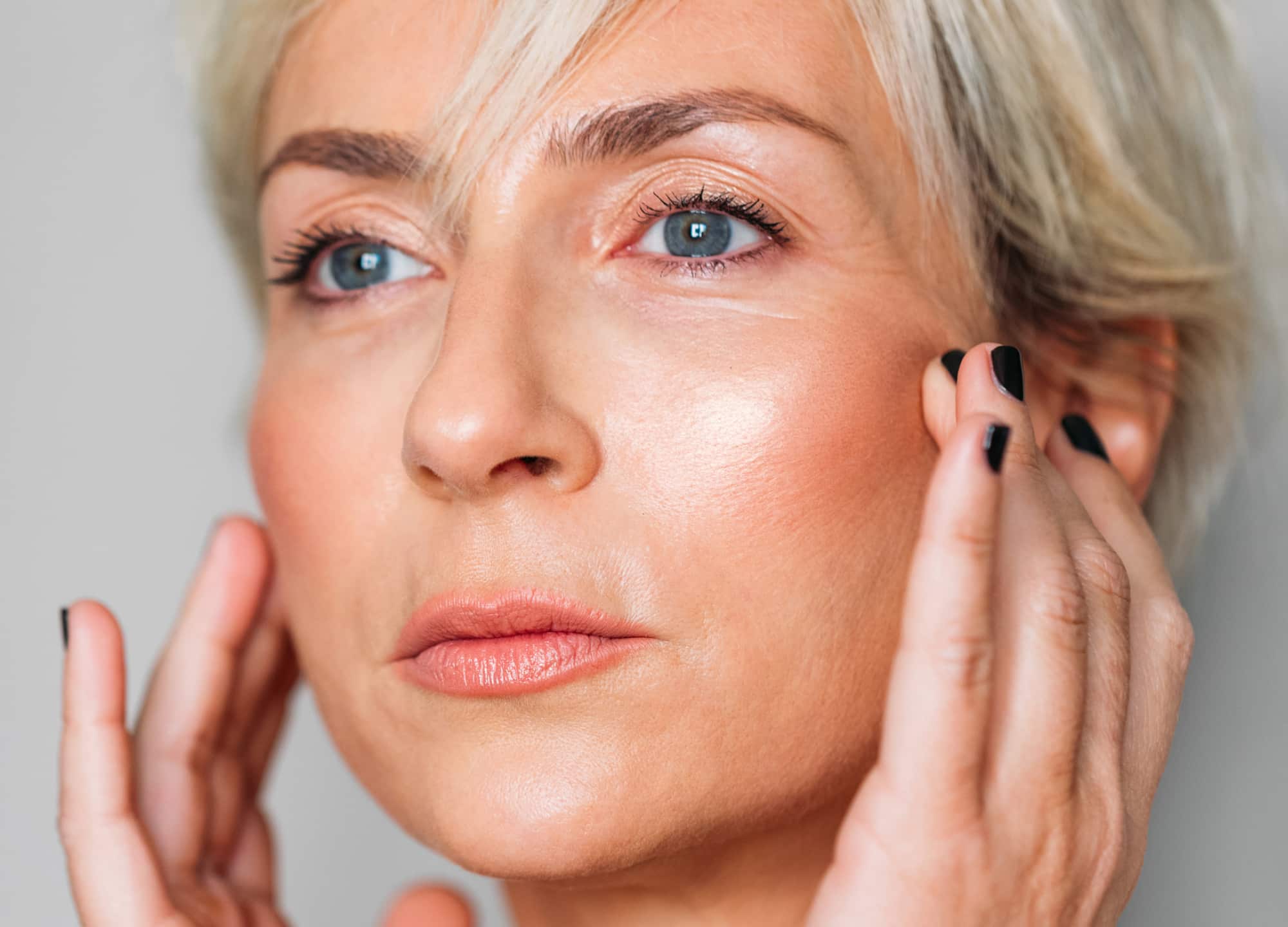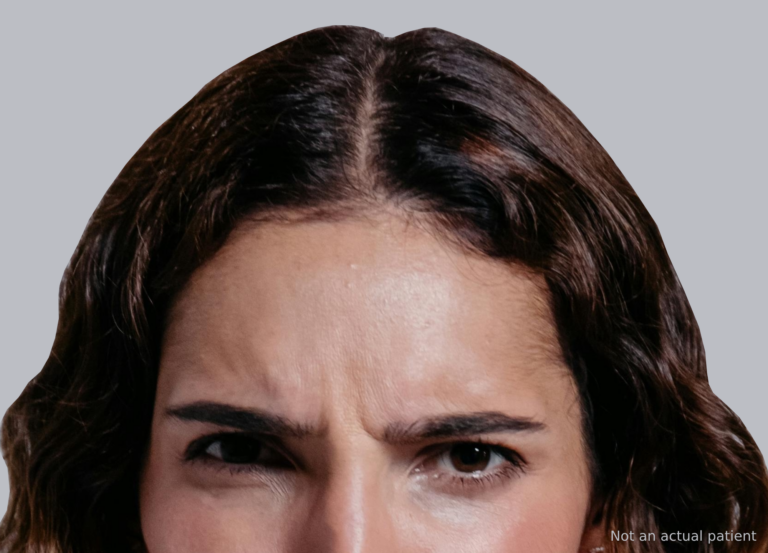Welcome to RealSelf’s new series, Seeing Scars. As part of our ongoing effort to boost transparency in plastic surgery, we’ll be showcasing incisions from various cosmetic procedures—across skin tones and at different stages of healing—to combat the fear and stigma surrounding surgical scars. Our latest installment explores facelift scars.
Is there a more anxiety-provoking scar in all of plastic surgery than that from a facelift? Circumnavigating the ears, facelift incisions not only are sizable and in plain sight, but if not meticulously designed, they can also serve as indelible evidence of surgery. The good news: Today’s surgeons pride themselves on routinely creating undetectable facelift scars.
Originating, typically, in the hairline by the temples and winding down and around the ears, facelift incisions are purposefully long. They grant access to the deeper tissues that surgeons are aiming to reposition or otherwise augment while allowing them to trim away excess skin before redraping and closing the face, all without tugging on or bunching up the skin in the process. And every millimeter of these incisions must be thoughtfully planned and executed.
To start, “the incision should carefully hug the temporal hairline—so that it’s hidden just behind it—without distorting it,” says Dr. John L. Burns Jr., a board-certified plastic surgeon in Dallas. “A carelessly placed incision will elevate the temporal hairline, leaving no sideburn and a bald spot at the temple.”
As the incision travels down the crease in front of the ear, it commonly dips behind the tragus—the tab of cartilage in front of the ear canal—before continuing along to the earlobe. (In male facelift patients, surgeons commonly keep the incision in front of the tragus in order to avoid pulling hair-bearing skin into the ear, where it clearly doesn’t belong.) “The earlobe itself is very critical,” adds Dr. Burns Jr. “It should remain as it is—either attached or unattached, depending on the patient—and it should not be placed under tension, as this can result in a pointy earlobe, called a pixie ear,” which is another classic tell of facelift surgery. The incision will then climb up the back of the ear before veering off into the hairline to hide.
Surgical cuts inevitably heal into scars, which tend to flatten and fade remarkably fast, as you can see below. In fact, many of these unfiltered images—submitted by both surgeons and patients—will have you pinching your screens and straining your eyes in an effort to see traces of scarring around the ears. Which is precisely the goal of every facelift surgeon on the planet.
On the table, immediately after facelift surgery
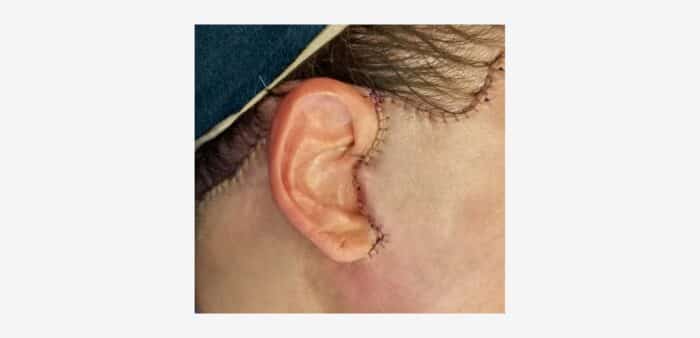
“Beautiful stitching sets the stage for beautiful results. This was taken immediately after surgery and was achieved by using good techniques to respect the skin and underlying tissues. It takes more time to close incisions this way, but details matter—and your face is worth it!” —Dr. Justin C. Cohen, a board-certified facial plastic surgeon in Washington, D.C.
One day post-op, one week post-op, and one year post-op

“In our practice, a face and neck lift involves tightening loose facial and neck skin and muscles, lifting the jowls, and removing fat deposits in the neck. It’s very important to not place any tension on the skin itself, since this can lead to wide and hypertrophic scars. The sutures are also removed within the first week after the surgery. After a facelift, the incisions are going to be red for the first couple of weeks, dark pink for the next couple weeks, and then light pink for two to three months, before turning to fine white lines. This patient’s scarring is pretty typical of a facelift in our practice, but everyone heals differently. A small steroid shot can be placed, if the scar becomes noticeable or lumpy.” —Dr. William Portuese, a board-certified facial plastic surgeon in Seattle
10 days post-op through approximately seven months post-op
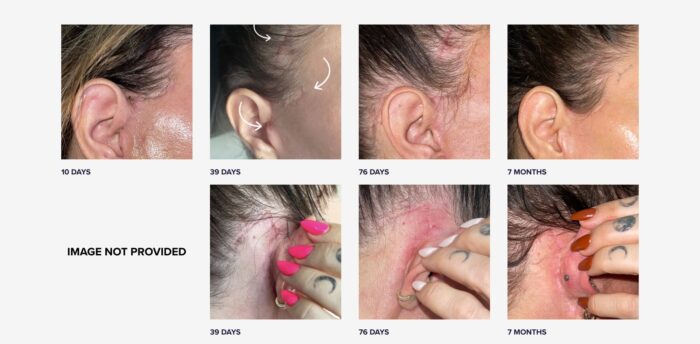
“I had a deep plane facelift, brow lift, and neck lift with Dr. Kian Karimi, a board-certified facial plastic surgeon in Los Angeles, in April of 2021. I’m 39 years old, with no underlying health issues that could’ve prevented me from healing well. As an aesthetician, I’ve worked for plastic surgeons and dermatologists, managing their patient’s post-procedure care, so I’m very familiar with the healing process and various scar therapies.
“Immediately after surgery, I began hour-long daily sessions of LED therapy using Celluma light panels on the near-infrared ‘wound healing and pain’ setting, which is said to help the body heal 300% faster. I used an antibacterial occlusive balm called mupirocin on the wounds on days 1 through 14. On day 15, I transitioned to Skinuva—a silicone-based scar gel with growth factors—which Dr. Karimi sent home with me.
“It was fascinating to watch my body heal. I never felt self-conscious about my incisions, as they were hidden in my hair, and I could easily cover them by wearing my hair down. Really, they were so well done that I had no insecurity around them. I felt confident that they would be undetectable once healed—and I was right.” —@aestheticsbyshekinah
Two weeks post-op
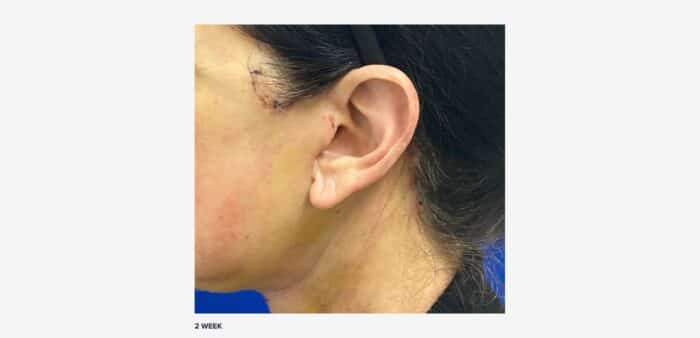
“Here is a 67-year-old, two weeks after her facelift, healing nicely. The incisions were placed in the hairline of the sideburn, then down the line where the ear attaches to the cheek and behind the tragus, and then they follow the line around the earlobe and behind the ear, in the ear crease, and along the hairline behind the ear. The scars behind the ear are the most unpredictable.” —Dr. Dilip D. Madnani, a board-certified facial plastic surgeon in New York City
Three weeks post-op
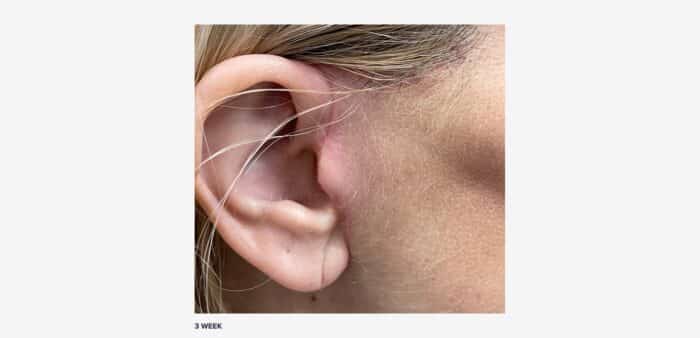
“I’d say her healing is typical for three weeks. The key to good scars is minimizing tension on the skin closure. All tension, if any, should be on the deep SMAS layer and not on the skin itself. This patient did use Biocorneum scar gel, starting at 12 days after surgery. I also recommend lymphatic drainage massage, at two and four weeks post-op, with the JetPeel system, but that’s more for swelling reduction and less so for scar management.” —Dr. Gary Linkov, a board-certified facial plastic surgeon in New York City
Six weeks post-op and five years post-op
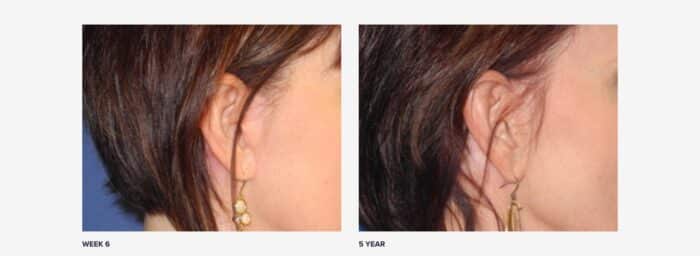
“This is very typical of how incisions mature over time on the face. At six weeks, they are the most noticeable—though even then, they are not very visible—but once you are a few months out, they become harder to see. No scars disappear completely, but certainly at five years out, it’s hard to tell where they are. No special scar treatments for her—just sun avoidance for the first few months.” —Dr. Shahram Salemy, a board-certified plastic surgeon in Seattle
Three months post-op and one year post-op

“Some redness and visibility in the early stages of healing are expected, but with time and appropriate aftercare, facelift scars can become hard to detect. With the trend of short-scar facelifts, the scars can be even further camouflaged. Hopefully, [concerns over scarring] are not what holds someone back from getting a good facelift result.” —Dr. Elizabeth Whitaker, a board-certified facial plastic surgeon in Atlanta
Six months post-op
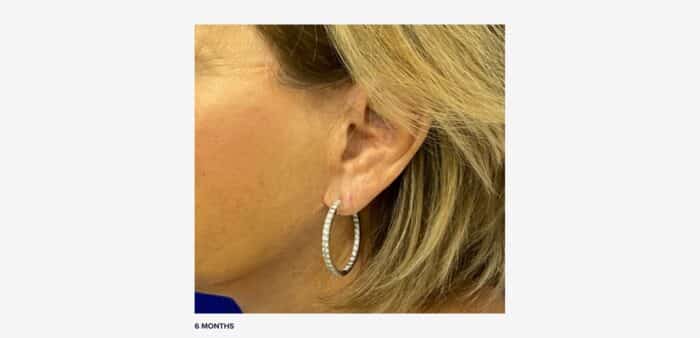
“This is a 66-year-old, six months after a facelift. Generally, facelift incisions heal really well, as they have here. However, some patients heal slower, with more redness or with some thickening. If infections occur, this too can affect the healing of the scars. In those cases, there are treatments—lasers, steroid injections, tattooing, hair transplants, and surgical scar revisions—that we can perform afterward, to improve the outcome.” —Dr. Madnani
Six months post-op
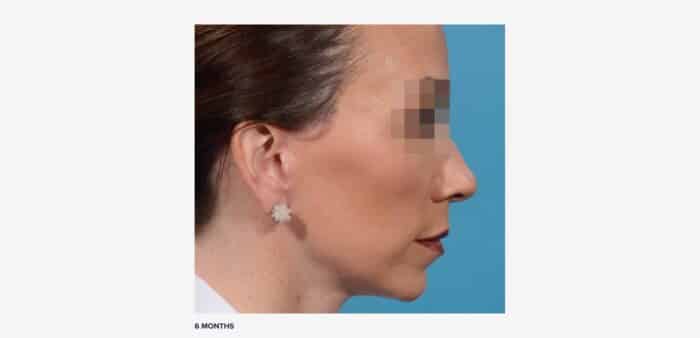
“After six months, a facelift incision should be thin, white, well hidden—virtually invisible. At the temple, the tragus, and earlobe, there should be no distortion of the anatomy and no telltale signs of surgery.” —Dr. John L. Burns Jr., a board-certified plastic surgeon in Dallas
10 months post-op
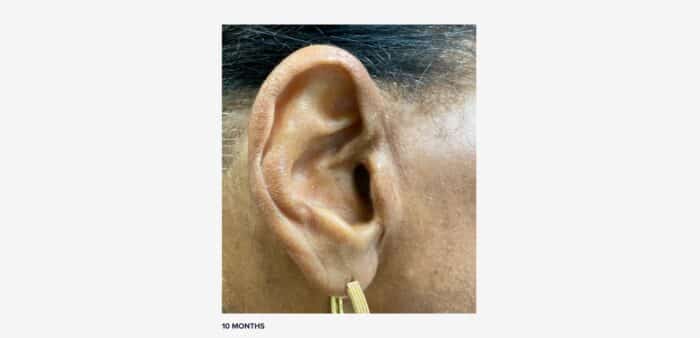
“The scars on this 60-year-old female, at 10 months post facelift, are quite typical of my African American patients. The key is to put the incisions in natural creases around the ear so they are hidden. While there is an increased risk of hypertrophic scarring [with darker skin types], I find it to be minimal in my patients. In all ethnic facelift patients, it is vital to make sure that you follow the natural skin creases around and behind the ears, perform tension-free closures of the skin while doing deep-layer repositioning with tension, and monitor for any early signs of hypertrophic scarring—which occurs very infrequently—treating with silicone sheeting, when necessary.” —Dr. Rod J. Rohrich, a board-certified plastic surgeon in Dallas
Nine and a half years post-op
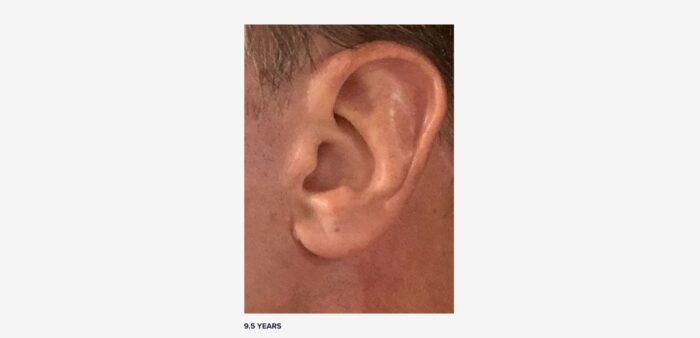
“My facelift scar healed very nicely. My plastic surgeon, Dr. Timothy Marten in San Francisco, does great work and is a very kind man. I followed his healing protocols, keeping the wound clean in the early stages and having lymphatic drainage massages, from around day 10 through the one-month mark. I also had laser therapy on the scar itself from Dr. Jill Waibel, a board-certified dermatologist in Miami.” —@faceliftconfidential







